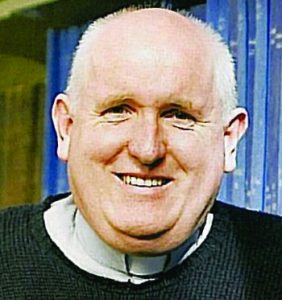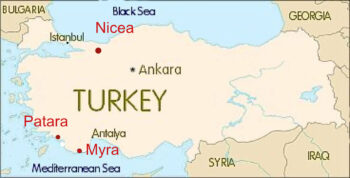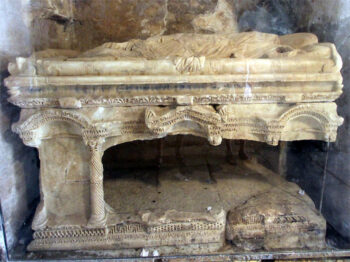December Saint

By Fr Mervyn Duffy SM
St Nicholas - 6 December
The Saint behind Santa

St Nicholas by Benozzo Gozzoli 1464
Chapel of S Agostino in San Gimignano, Italy
Santa Claus is a Dutch form of “Saint Nicholas” and is one of the titles by which the fourth century bishop of Myra came to be known, but what can reconstruct a little of the historical figure around whom extraordinary legends came to cluster.
Nikolaos, to give his name closer to its original form, was born on 15 March 270 AD to a wealthy Greek family in the port town of Patara, in what today is Turkey. As a young man he travelled to Egypt and Israel. He was a Christian at a time when Christianity was technically illegal and periodically persecuted. His uncle was the bishop of Patara, and he ordained Nikolaos as priest.
When the bishop of Myra (another port along the coast of Turkey) died, the Christians of that town looked for his successor and chose Nikolaos, who, probably reluctantly, took on the task. He was a good and well-loved bishop who used his own money to care for the poor of the town.
In the early 300s AD he was arrested as part of the persecution of Christians by Emperor Diocletian. He was imprisoned and tortured.
In 313 AD the co-Emperors Constantine and Maxentius issue an “Edict of Toleration” which allowed Christians to worship freely. Bishop Nikolaos was freed and was considered by his flock to be a “Confessor” – one who had suffered for the faith. They were proud of their bishop.
In 325 AD the by then sole-Emperor, Constantine, called the first great Church Council in Turkey to resolve the division in the Church because of the teachings of the priest, Arius. From all over the Roman Empire bishops came to gather at the Emperor’s summer residence at Nicaea. It is reported that 318 bishops attended and on one list the 151st name is ‘Nicholas of Myra of Lycia’. This was the Council that produced most of the Creed we say at Mass. There is a legend, unlikely to be historical, that during the vigorous debating of the Council, Nicholas punched Arius!
 In 343 AD, at the age of 73, Nicholas died. His tomb in the church in Myra became a place of veneration and intercession. The faithful of his diocese remembered his goodness and courage and considered that he was a saint. They commemorated especially the day of his death, December 6. There was no official centralised process for declaring someone to be a saint of the church in those days. A person came to be recognised as a saint because of the devotion to them, and because prayers asked in their name had a reputation for being granted.
In 343 AD, at the age of 73, Nicholas died. His tomb in the church in Myra became a place of veneration and intercession. The faithful of his diocese remembered his goodness and courage and considered that he was a saint. They commemorated especially the day of his death, December 6. There was no official centralised process for declaring someone to be a saint of the church in those days. A person came to be recognised as a saint because of the devotion to them, and because prayers asked in their name had a reputation for being granted.
Nicholas’s tomb became a shrine and people prayed there for their various needs. Sailors lead a dangerous life and need all the help they can get. A port city with a famous devotional site became a popular place for seamen to stop and pray for a safe voyage. They spread the fame of St Nicholas around the Mediterranean Sea.

Tomb of St Nicholas
What happened in the centuries that followed is literally the stuff of legends – and perhaps a future article!
 Entries(RSS)
Entries(RSS)